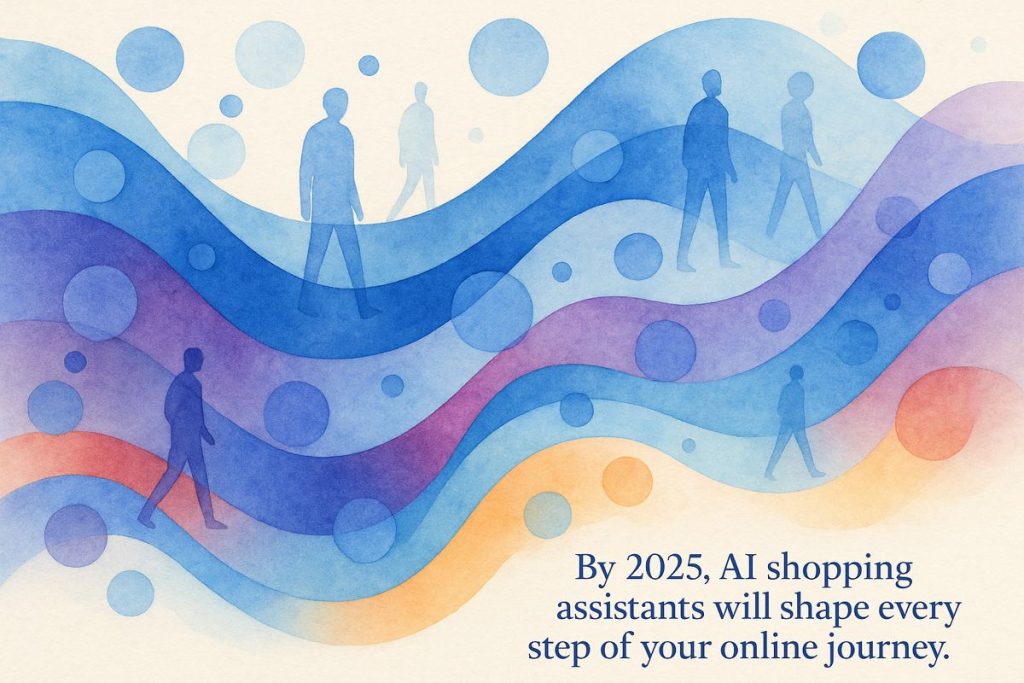In 2025, AI agents and bots shape online shopping by outnumbering people and quietly powering most of the clicks and searches. Shopping becomes ultra-personalized, with digital assistants filtering and recommending products almost magically, while brands rush to stay visible to both bots and humans. Real-time data and privacy are now top priorities, as shoppers want more control and clarity about their digital trails. The world of e-commerce feels both strange and thrilling, with technology working nonstop behind the scenes.
How is AI transforming e-commerce in 2025?
In 2025, AI fundamentally changes e-commerce by enabling intelligent agents and bots to outnumber human shoppers, automating product discovery, personalizing recommendations, ensuring real-time indexing, and transforming key metrics. Brands must optimize for both bots and humans, focusing on data transparency and privacy.
When Bots Outnumber Shoppers (And No One Notices the Clicks)
Picture this: I’m hunched over my laptop at 1 a.m., mug of coffee cooling to the viscosity of molasses, and the only thing louder than my typing is the low hum of my overworked fridge. The revelation? In 2025, e-commerce is less a digital bazaar for insomniac shoppers and more a palimpsest of AI agents, bots, and humans brushing past each other like distracted commuters at Shibuya Crossing. The old world—of you, me, and a web browser—is being quietly overgrown by intelligent assistants that parse, chat, and shop with the slipperiness of an eel in olive oil.
Don’t believe me? According to Botify’s Adrien Menard, traffic from bots and AI agents doesn’t just trickle into websites—it whooshes in, a digital deluge eclipsing human visits on some days (BusinessWire). It’s like the roar of a subway, constant and unseen. Brands now have to cater to this tripartite dance: not just consumers, but the bots and agents mediating every click.
Sometimes, I wonder—if a product appears on a webpage but no AI agent indexes it, does it even exist? Philosophical, sure. But for brands, it’s existential.
Personalization, Or How I Learned to Stop Worrying and Love the Algorithm
Once upon a time, shopping online was like rummaging through a giant, disorganized attic. Not anymore. Today, you can command your AI assistant to omit every instance of polyester, or ask for the creamiest French cheeses under $15, and it responds with the efficiency of a Swiss watch. Shoppers are programming preferences faster than I can program my morning espresso. I have to admit, my first encounter with filtering out an entire brand via an AI agent made me feel an odd pride—like I was wielding the controls to a hyperspectral telescope pointed at the galaxy of consumer goods.
Behind this magic, platforms like Wizzy AI and Botify are crunching mountains of behavioral data—think millions of clicks, searches, and (whoops) abandoned carts (Wizzy AI). Recommendations now emerge as if conjured by a digital sommelier, tailored with uncanny specificity. Yet, behind the curtain, there’s the faint whiff of uncertainty: did the algorithm get it right, or is it steering me toward a regrettable neon beanbag? Ugh, happens.
And, confession—I once spent fifteen minutes arguing with a voice-activated shopping agent about the definition of “gluten-free”. Spoiler: I was wrong. But hey, at least I learned my lesson (and got better snacks).
The Strange Art of Being Found (By Machines)
Let’s get granular. Brands now wrestle with a problem as old as the Sphinx: how do you get noticed by a presence that doesn’t blink or sleep? If your product data isn’t indexed in real-time, you’re essentially invisible to the bots managing discovery for millions of AI-driven shoppers. Tools like SmartIndex and IndexNow are the new gatekeepers, automating this Sisyphean task (Botify Blog).
I had to stop and ask myself: would I rather be overlooked by a human or a bot? Oddly, the latter feels more existentially bleak. In regulated sectors—think pharmaceuticals—AI indexing isn’t just about visibility; it’s about compliance, legality, and, occasionally, sidestepping a Kafkaesque labyrinth of restrictions (Botify).
One time, a client of mine in luxury skincare panicked when their entire winter line vanished from AI recommendations. The culprit? A single out-of-date inventory file. Bam! Invisible overnight. We fixed it, but the anxiety left a metallic aftertaste.
New Metrics, Old Neuroses: Chasing the AI Dream
KPIs aren’t what they used to be. Forget click-through rates or keyword rankings. Now, it’s all about how often your products appear in AI-powered recommendations, or how many times an agent scrapes your fresh-off-the-press product data. Brands obsess over the granularity of engagement: did the AI pick up the new SKU? Did it flag the compliance note? The stakes are high, and the numbers—well, they never sleep (AIContentfy).
But here’s the kicker: as AI takes the wheel, shoppers demand more control over their privacy. Transparency isn’t just a virtue—it’s table stakes. Retailers are scrambling to communicate exactly how, when, and why data is used, with privacy policies sprouting legalese like mushrooms after rain (LitsLink).
Meanwhile, innovations like voice-driven search and image recognition are transforming shopping into an almost synesthetic experience. You can snap a photo of a jacket in Copenhagen and find its doppelgänger stateside within seconds. The future smells faintly of ozone and ambition.
Final Sips: AI Commerce is Here—Ready or Not
E-commerce in 2025 isn’t a frictionless utopia, but it’s a laboratory of quirks and velocities. There are moments of confusion (and yes, minor irritation), but also deep fascination. The dance between brands, bots, and buyers grows ever more intricate, and sometimes the music skips, but the rhythm persists.
So next time you shop online, spare a thought for the silent army of AI agents parsing, indexing, and recommending behind the digital curtain. Or don’t. They’ll notice you anyway…
For further enlightenment—and some light existential dread—peruse:
– Botify: Be Found Everywhere
– Wizzy AI: The AI E-commerce Revolution
– LitsLink: AI in Ecommerce 2025
– AIContentfy: AI-Generated Content in E-commerce
Hope you brought your own coffee. You’ll need it.
